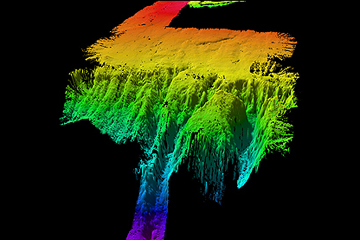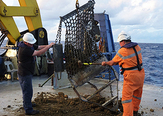Surprising Sunken Islands Discovered Near Australia


Two sunken islands almost at the site of Tasmania have been discovered in the Indian Ocean west of the Australian city of Perth.
The researchers who found the islands during a recent sea voyage think that they were once part of the ancient supercontinent of Gondwana, which could have ramifications for our understanding of how that giant landmass broke apart.
"The data collected on the voyage could significantly change our understanding of the way in which India, Australia and Antarctica broke off from Gondwana," said team member Joanne Whittaker, a postdoctoral fellow at the University of Sydney.
The islands were found during a three-week voyage to map the seafloor of the Perth Abyssal Plain that concluded last week. Travelling on the Commonwealth Scientific and Industrial Research Organisation (CSIRO) vessel Southern Surveyor, the scientists discovered the islands through detailed seafloor mapping and by dredging rock samples from the steep slopes of the two islands that now are covered by about a mile (1.5 kilometers) of ocean water.
"The sunken islands charted during the expedition have flat tops, which indicates they were once at sea level before being gradually submerged," Whittaker said in a statement. The rocks retrieved from the islands also surprisingly suggested the islands weren't always underwater.
"We expected to see common oceanic rocks such as basalt in the dredge, but were surprised to see continental rocks such as granite, gneiss and sandstone containing fossils," said chief scientist for the expedition Simon Williams, also of the University of Sydney.
The makeup of the rocks suggests how the islands might have fit into the breakup of Gondwana: In the Cretaceous period when dinosaurs roamed the Earth (more than 130 million years ago), India was adjacent to Western Australia. When India began to break away from Australia, the islands formed part of the last link between the two continents. [Have There Always Been Continents?]
Get the world’s most fascinating discoveries delivered straight to your inbox.
Eventually these islands, referred to as "micro-continents" by scientists, were separated from both landmasses and stranded in the Indian Ocean, thousands of miles from the Australian and Indian coasts, the scientists suggest.
"A detailed analysis of the rocks dredged up during the voyage will tell us about their age and how they fit into the Gondwana jigsaw," Williams said.
The implications of the detail to be found from these islands goes beyond a finer-tuned picture of Gondwana's dismantling: "Our preliminary analysis of the magnetic data that we collected could cause us to rethink the whole plate tectonic story for the whole of the eastern Indian Ocean," Whittaker said, who was unable to sail on the voyage due to the recent birth of her baby.
Researchers from Macquarie University and the University of Tasmania also participated in the expedition.
This story was provided by OurAmazingPlanet, a sister site to LiveScience.




